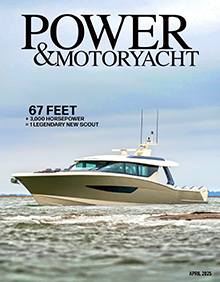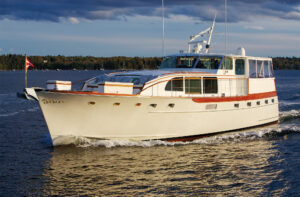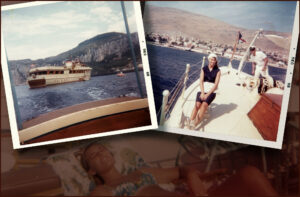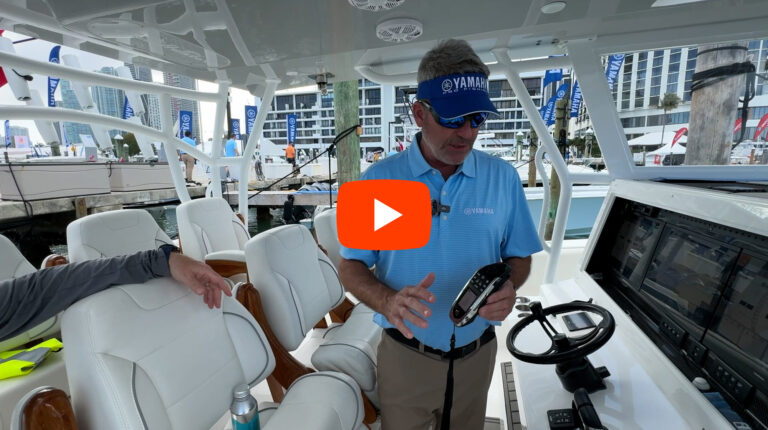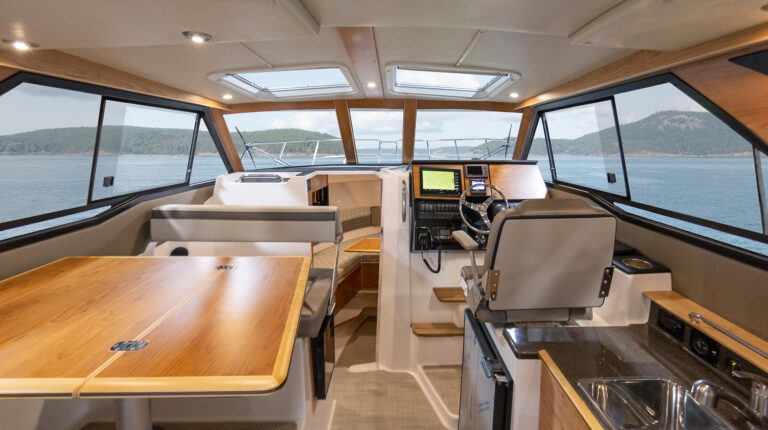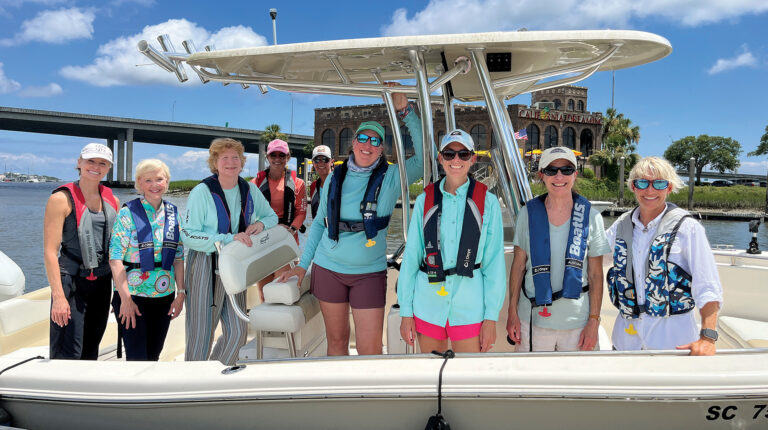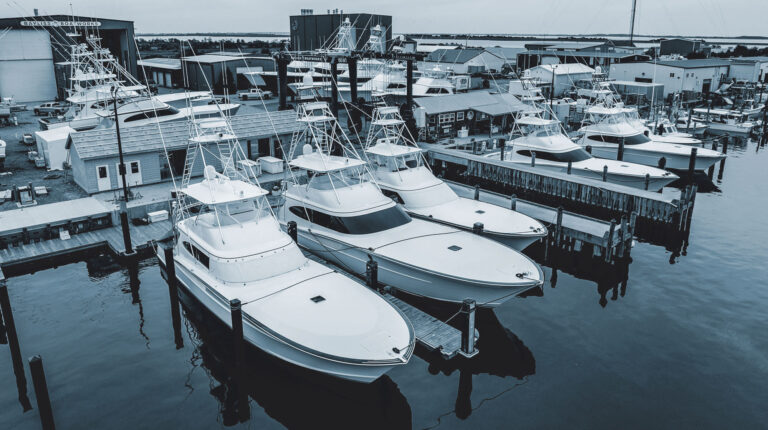Who among us hasn’t daydreamed about the ultimate cruise? The one where you sell the house, put your furniture in storage, move aboard your boat, and cruise the world. Many preface this dream with “maybe someday” or “when I retire…” For Russell and Tammy Massey, this dream was also their goal. After retiring, they (along with their three dogs) moved aboard a 2000 Nordhavn 40 and set out to cruise full-time. Thanks to an ever-so-faint Wi-Fi signal we caught up with the Masseys as they explored British Columbia’s remote Broughton Islands to find out how their new lifestyle was treating them and what advice they have for fellow dreamers.

What has surprised you the most about life aboard your Nordhavn?
That eventually we found a place for everything! Well … mostly. Actually, Nordhavns have great stowage but we brought more than we needed. We have since “purged.” Surprisingly we can live with a lot less than we realized.
Also, from the very beginning we were shocked by the boat’s stability when anchored, underway, or at the dock. The boat is heavy and there isn’t a lot of motion, which is nice.
The complexity of the boat was also surprising along with the amount of learning related to the many systems and multiple redundant systems. Who knew living on a boat would be so strenuous, both mentally and physically?! It really isn’t possible to cruise a boat actively and not be prepared to crawl around, under, and over things in places that aren’t comfortable. Heavy-duty kneepads are a necessity.
What is your favorite aspect about living aboard?
Obviously the incredible places that we’ve been to that most people don’t have the opportunity to see; places you can only get to by boat. Our temporary back and front yards have included some pretty amazing views.
We’ve enjoyed making new friends and meeting really interesting people with a built-in common interest. We love seeing the wildlife: whales, bears, seals, loons, etc. We both love being on the water with the quiet, tranquility, and solitude.
Then there’s the feeling of controlling your destiny—we go when we want to see something new, stay when we like where we are. Our fuel capacity is large enough—and the boat’s systems are such—that we can stay out as long as we want. Fresh veggies and eggs are often the only reason we stop at a marina or town.

Are there aspects of living on land that you miss?
Besides ice cream and long hot baths? Currently we miss the luxury of reliable phone service and unlimited Wi-Fi access, or any kind of Wi-Fi access for that matter. We’ve had to learn to make do with limited resources while cruising in remote areas. And obviously, we miss our families and friends, but I don’t think we miss land-based things as much as we thought we would.
What advice would you give to someone who’s contemplating being a full-time cruiser?
First, distinguish the difference between simply living aboard and spending the majority of your time in marinas versus living aboard and actively cruising 90 percent of the time.
Knowing this will help determine what kind of boat you should purchase, and that is critical.
A boat that will be safe and comfortable in rough seas or offshore is very different from a boat designed for settled weather and coastal or inshore cruising. Our advice comes from the perspective of living aboard and actively cruising. To the extent you’re considering living aboard while cruising, get the smallest boat that you can comfortably live on and manage, rather than the largest boat you can afford. Take into consideration the systems you will need to learn, manage, and maintain along with tasks like docking and anchoring. The larger the boat, the more maintenance and cleaning that needs to be dealt with, which can become a chore when things aren’t readily available down the street. And while many friends and family say they will come visit the boat, it won’t happen all that often. You won’t need extra rooms and heads for a bunch of visitors all the time. We found it’s easy to make do with another couple as guests, even with a smaller second stateroom and one head.
And most important, just do it! It will be a wonderful experience. I read a quote somewhere that says, “Go small and go now.” I think that is pretty good advice.
How did you ultimately decide upon the Nordhavn 40?
It goes back to the criteria of deciding to live aboard as cruisers. We went to a lot of Trawlerfests to determine what was important to us. Seeing actual layouts and space, getting a feel for the space on different boats was helpful to us.
We love having a Portuguese Bridge and having separate spaces was important to us, for example a dedicated pilothouse. We also didn’t want limitations on where we could go and felt we would be comfortable and safe going anywhere in the Nordhavn. The Nordhavn is a heavy boat with a thick hull, quality components, reliable engines, well engineered, heavy doors, extra-heavy glazing on the windows, quality fit and finish, and we really liked that there is a wing engine for safety in offshore passages. Nordhavns have proven their ability by crossing oceans and circumnavigating the world. While we were willing to make compromises on many things, we were not willing to compromise on safety.

What are some challenges future full-time cruisers should prepare for?
Full-time cruising can, at times, create challenges (opportunities) in a relationship. I think it is important for people thinking about living aboard to understand what each other’s capabilities and interests are and know what kind of cruising they will do. In order to complete overnight or several-day passages, (or even to be safe in short passages) both people will need to learn most of the systems. Radar, autopilots, chartplotters, (or even just reading charts), and engine-room checks to name a few can be a challenge. And if one person is not interested, or is unwilling to devote the time needed to master these systems, then the cruising itinerary can become somewhat limited. Knowing what kind of cruising you want to do and having a shared commitment to the learning process needed to accomplish that is very important.
920 Sweet T’s total fuel capacity in gallons
150 The square footage of their land-based storage unit that holds the rest of their possessions
105 Total horsepower
15 Number of flashlights aboard
8.5 Sweet T’s max speed in knots
7 Cruising speed in knots
3 Number of dogs aboard
2 The number of staterooms
1 Number of whales seen so far while cruising in the Pacific Northwest

